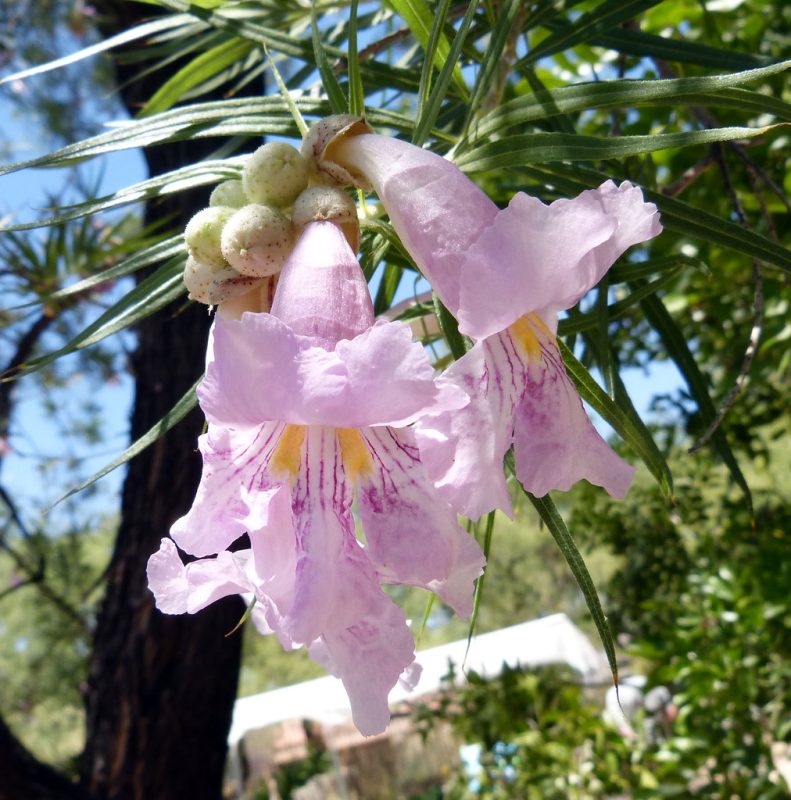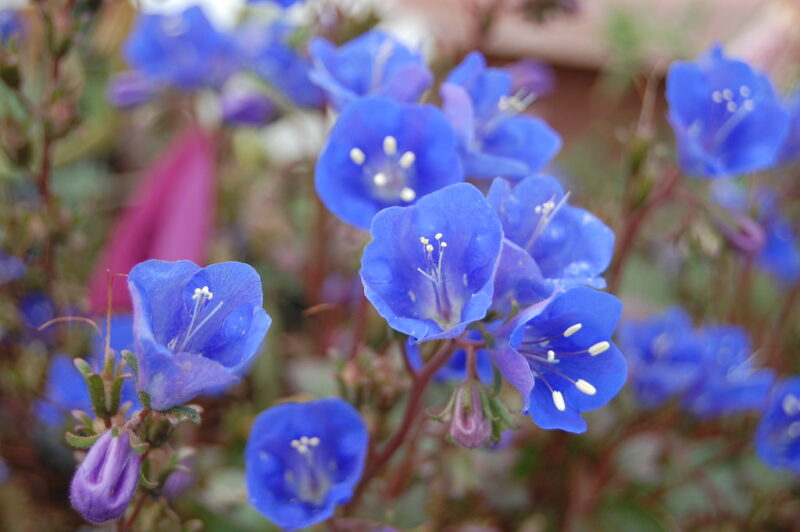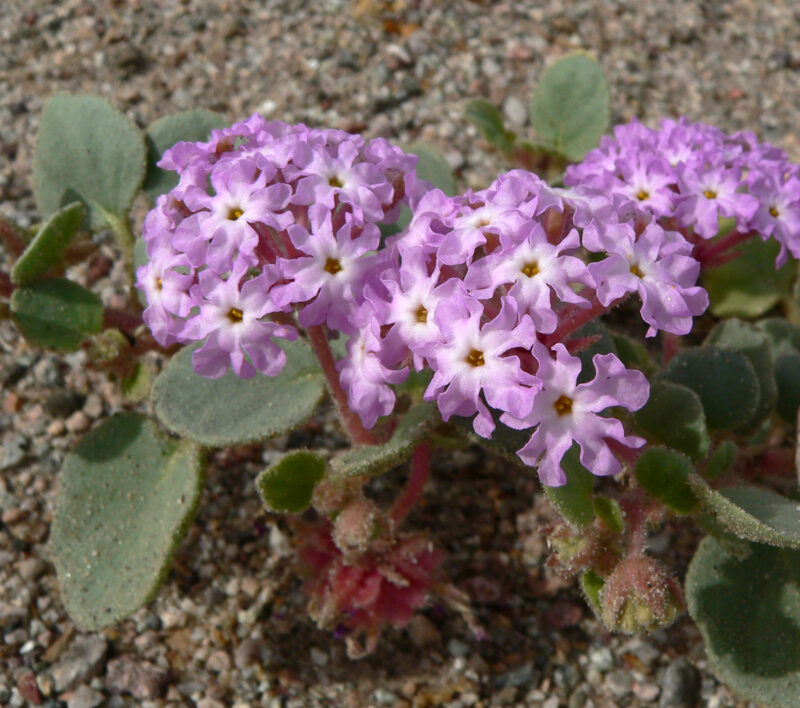The Mojave Desert, a unique ecological zone located primarily in southeastern California, parts of Nevada, Utah, and Arizona, is known for its remarkable landscapes and resilience in the face of extreme weather conditions.
This harsh environment, with its scorching summer temperatures and limited rainfall, hosts a variety of native plant species that have adapted to thrive under such challenging circumstances. Understanding these plants not only enriches our appreciation of desert ecosystems but also aids conservation efforts.
Below, we will explore native plants of the Mojave Desert, highlighting their unique traits, ecological roles, and cultural significance.
Joshua Tree

The Joshua Tree (Yucca brevifolia) is perhaps the most iconic plant of the Mojave Desert. Named after the biblical figure Joshua, its unique shape resembles ancient, outstretched arms. This tree is a member of the Agavaceae family and can grow up to 40 feet in height. The Joshua Tree is famous for its striking, spiky leaves and white flowers that bloom in the spring, attracting numerous pollinators including bees and hummingbirds. It plays a crucial role in the ecosystem, providing shelter and food for a variety of desert wildlife.
Joshua Trees can live for over 150 years, but they face threats from climate change and urbanization, making conservation efforts imperative. They thrive in well-drained soils and are primarily found in the Joshua Tree National Park, which highlights their ecological and cultural importance to the region.
Creosote Bush

The Creosote Bush (Larrea tridentata) is a prevalent shrub across the Mojave Desert, identifiable by its bushy appearance and distinctive, fragrant leaves that release a smell reminiscent of rain after a dry spell. This plant is known for its extreme resilience to drought, exhibiting a deep root system that taps into underground water sources. It can live for up to 200 years, and its ability to produce dense resin allows it to minimize water loss and protect against herbivory.
Creosote Bushes serve as a vital resource for desert animals, providing cover and food. They also have important medicinal uses; indigenous peoples historically used its leaves for various ailments. With its unique adaptations, the Creosote Bush is often seen as a symbol of survival in the desert.
Desert Willow

The Desert Willow (Chilopsis linearis) is an elegant tree that can grow up to 30 feet tall, distinguished by its long, narrow leaves and trumpet-shaped flowers that bloom in shades of lavender, pink, or white. This plant thrives in the sandy soils of the Mojave Desert and is often found near washes and stream banks. The Desert Willow is not a true willow but belongs to the Bignoniaceae family.
Blooming primarily in the summer, Desert Willows attract a variety of pollinators, including hummingbirds and butterflies. They are particularly valued for their aesthetic appeal in landscaping and their ability to provide shade and habitat for various wildlife species. Moreover, the bark of the Desert Willow has been used by indigenous cultures for functional and ceremonial purposes.
Mojave Yucca

The Mojave Yucca (Yucca schidigera) is another notable desert plant characterized by its tall flowering stalks and rosettes of sword-shaped leaves. Typically reaching heights of 3 to 10 feet, this succulent plant originates from the Mojave region and is known for its white, creamy flowers that bloom in late spring and early summer. This plant not only plays an integral role in the local ecosystem by providing food for pollinators but also serves as a habitat for various animals.
The plant’s fibers have historically been used by Native American tribes for making ropes and baskets, showcasing its practical significance. The Mojave Yucca is often found in arid internal ecosystems and is a key player in the desert’s biodiversity.
Buckhorn Cholla

The Buckhorn Cholla (Cylindropuntia acanthocarpa) is a striking cactus with long, jointed stems that can grow up to several feet tall. It is recognized for its unique branching pattern, resembling a buck’s horns, and the spine-covered joints that can easily detach and stick to passersby. These adaptations not only contribute to avoiding herbivores but also aid in the plant’s reproduction through vegetative propagation.
In spring, the Buckhorn Cholla produces vibrant yellow or pink flowers that attract pollinators. The fruits, known as “tunas,” are edible and have been an important food source for both wildlife and local indigenous communities. This cactus exemplifies the stark beauty of the Mojave and highlights the intricate relationships between flora and fauna in arid environments.
Nevada Sagebrush

Nevada Sagebrush (Artemisia tridentata ssp. wyomingensis) is a dominant plant species in the Mojave Desert, characterized by its silvery-green leaves and fragrant aroma. This drought-tolerant shrub can grow up to 4 feet tall and plays an essential role in the desert ecosystem. Its deep root system enables it to survive long periods without water, making it a vital component of the desert landscape.
Nevada Sagebrush provides habitat and food for a variety of wildlife, including birds and mammals. The plant’s leaves and stems contain essential oils that have antiparasitic properties, historically used by indigenous tribes for medicinal purposes. The resilience and adaptability of Nevada Sagebrush reflect the challenges of life in the Mojave Desert.
Mojave Bluebell

The Mojave Bluebell (Phacelia campanularia) is a delightful annual flower that adds a splash of color to the desert landscape during the spring flowering season. Residing primarily in sandy soils, this plant is characterized by its bell-shaped, bright blue flowers that attract numerous pollinators, particularly bees.
Mojave Bluebells are typically found in the aftermath of rainfall, showcasing the seasonal nature of Mojave vegetation. They are often an important indicator of soil health and ecological diversity, providing essential insights into the harsh conditions and cycles of the desert environment. The beauty of these flowers serves as a testament to nature’s resilience and creativity.
Desert Sage

Desert Sage (Salvia dorrii) is a remarkable aromatic plant found in the arid regions of the Mojave Desert. Typically growing between 1 to 3 feet tall, this perennial shrub is recognized for its strong fragrance and purple flowers that attract pollinators, especially bees and butterflies. Desert Sage is commonly found in well-drained soils and is adapted to survive the desert’s harsh climate.
This plant has cultural significance, as it has been used by Native American tribes for various ceremonial and medicinal purposes. Its leaves can be made into teas, ointments, or burned as incense, showcasing the multifaceted value of this plant in both ecological and cultural contexts.
Desert Marigold

The Desert Marigold (Baileya multiradiata) is a perennial herb that thrives in the dry, sandy soils of the Mojave Desert. Its vibrant yellow, daisy-like flowers thrive from early spring to late fall, brightening the landscape with their cheerful hues. This plant can grow up to two feet tall and is adapted to the desert’s extremes, efficiently utilizing available moisture.
Desert Marigold blooms are cherished not only for their beauty but also for their role in supporting various pollinators and birds. Its texture and appeal make it a popular choice for desert landscaping, as it requires minimal water and maintenance. Additionally, traditional uses of this plant by indigenous peoples highlight its cultural importance and place in the local ecology.
Palm Date Tree
In the harsher climates of the Mojave Desert, the Palma Date Tree (Phoenix dactylifera) stands out as a remarkable provider of sustenance and shade. Known for its tall trunk and large fronds, the Date Palm can reach heights of 75 feet. The luscious, sweet dates produced by the tree are a staple food source in many desert communities.
These trees thrive in areas with sufficient water supply and are often found near oases or irrigation canals. The Date Palm serves as a crucial habitat for various desert wildlife while providing a multitude of uses for humans, from food production to landscaping. Their imposing beauty and functionality illustrate the richness of life present in the Mojave.
Desert Broom

Desert Broom (Baccharis sarothroides) is an adaptable shrub that can reach heights of up to 10 feet and is known for its slender, broom-like appearance. This native plant typically flourishes in disturbed areas and along roadsides, contributing significantly to the Mojave Desert’s landscape.
Desert Broom produces small, inconspicuous flowers, mostly during late summer and fall when other plants may be dormant. Its ability to thrive in challenging conditions allows it to establish itself quickly, preventing soil erosion and assisting in habitat restoration. This plant is often used in landscaping for its resilience and aesthetic qualities.
Desert Ironwood

The Desert Ironwood (Olneya tesota) is a slow-growing tree that can reach heights of 25 feet, characterized by its dense, hard wood, glossy leaves, and small, white flowers that bloom in spring. This native plant plays a vital role in the Mojave Desert ecosystem, providing shade and habitat for numerous desert species.
The wood of the Desert Ironwood is exceptionally durable and has been historically used by indigenous peoples for tool-making and crafting. Additionally, the tree offers food for pollinators and serves as a critical erosion control plant. Its impressive longevity and ecological significance symbolize the enduring nature of life in the Mojave.
California Poppy

The California Poppy (Eschscholzia californica) is a vibrant flowering native plant that adds splashes of orange and yellow to the Mojave Desert. As California’s state flower, the California Poppy is known for its delicate, cup-shaped blooms that thrive in well-drained soils and bloom in spring. This perennial plant can grow up to 12 inches tall, and the flowers close each evening and open again with the morning sun.
Besides its beauty, the California Poppy also plays an important role in supporting various pollinators. It is drought-tolerant, making it an excellent choice for desert gardens. This plant’s presence illustrates the interplay between beauty and practicality in the Mojave’s unique landscape.
Desert Tobacco

Desert Tobacco (Nicotiana obtusifolia) is a wildflower belonging to the nightshade family, often found in sandy soils and disturbed areas throughout the Mojave Desert. This plant produces small flowers that attract various pollinators, including bees and hummingbirds, while its thick leaves have a distinctive aroma.
Historically, Native American tribes utilized Desert Tobacco for ceremonial smoking and medicinal purposes, showcasing its cultural significance. The plant thrives by establishing deep roots that allow it to access water in times of drought. Its resilience in harsh conditions reflects the adaptability of desert flora.
Sand Verbena

Sand Verbena (Abronia umbellata) is an enchanting annual flowering plant that thrives in the sandier areas of the Mojave Desert. Known for its bright clusters of pink, purple, or yellow flowers, Sand Verbena typically blooms in spring, attracting a vibrant array of pollinators, including butterflies and bees.
This plant withstands drought conditions, and its growth is often encouraged through periodic rainfall. Sand Verbena holds ecological importance by stabilizing sandy soils and providing nutrients for insects that play a vital role in the local ecosystem. Its beauty enhances the desert landscape, making it a favorite among desert gardeners.
Chuparosa

Chuparosa (Justicia californica) is a deciduous shrub famous for its bright red tubular flowers, which bloom during the spring and summer months. This plant can reach heights of 4 to 6 feet and is often found in rocky slopes and canyon washes. Chuparosa attracts hummingbirds and butterflies, providing valuable food sources and habitat for these pollinators.
Historically, Chuparosa has cultural significance for indigenous peoples who used its leaves for various medicinal purposes. The shrub’s adaptability to arid conditions and vibrant flowers contribute to its prominence in the Mojave’s landscapes, celebrating the resilience and beauty of desert flora.
Mojave Aster

The Mojave Aster (Xylorrhiza tortifolia) is a perennial flowering plant characterized by its stunning purple or lavender blooms that appear in the late summer to early fall. This plant typically grows in dry, rocky soils and is known for its resilience to drought, exhibiting a unique adaptation to its harsh environment.
Mojave Aster’s foliage serves as a vital resource for pollinators during the drier months when few other flowers bloom. It is an essential component of the desert ecosystem and contributes to maintaining biodiversity, offering beauty that enhances the stark desert landscape.
Palm Springs Fan Palm

The Palm Springs Fan Palm (Washingtonia filifera) is a true desert survivor, often found in the oases and low-lying areas of the Mojave Desert. These palms can grow up to 75 feet tall, displaying large, fan-shaped leaves that provide shade and shelter for wildlife.
The fruits of the Palm Springs Fan Palm are edible and serve as a food source for both animals and humans, utilized extensively by Native Americans. The height and stature of these palms make them a staple of desert landscapes, symbolizing the resilience of plant life in arid regions while providing essential habitat for desert fauna.
Woolly Cactus

Woolly Cactus (Grusonia invicta) is a unique and intriguing cactus species found in the Mojave Desert. Distinguished by its dense covering of white hairs, which provide insulation against the heat, this cactus can withstand extreme desert conditions. Its small, vibrant flowers bloom in spring, adding visual interest to the rugged terrain.
Woolly Cactus often grows in a clustered, low-lying formation, and the dense hairs provide protection against herbivores and harsh sunlight. The intriguing structure and resilience of this cactus showcase the diversity of life forms adapted to thrive within the Mojave’s unique ecosystem.
Purple Three-Awn

Purple Three-Awn (Aristida purpurea) is a species of grass native to the Mojave Desert, distinguished by its fine texture and striking purple seedheads. This perennial grass can grow up to 30 inches tall, thriving in sandy and rocky soils.
Purple Three-Awn is an important component of the desert grasslands, providing ground cover that helps prevent soil erosion and support the local ecological balance. The resilience of this grass species illustrates the inherent adaptations required to thrive in arid conditions while contributing to the overall biodiversity of the Mojave Desert.
Conclusion
The Mojave Desert is a vibrant mosaic of life, punctuated by its diverse native plant species that have evolved to survive the extreme conditions of their environment.






